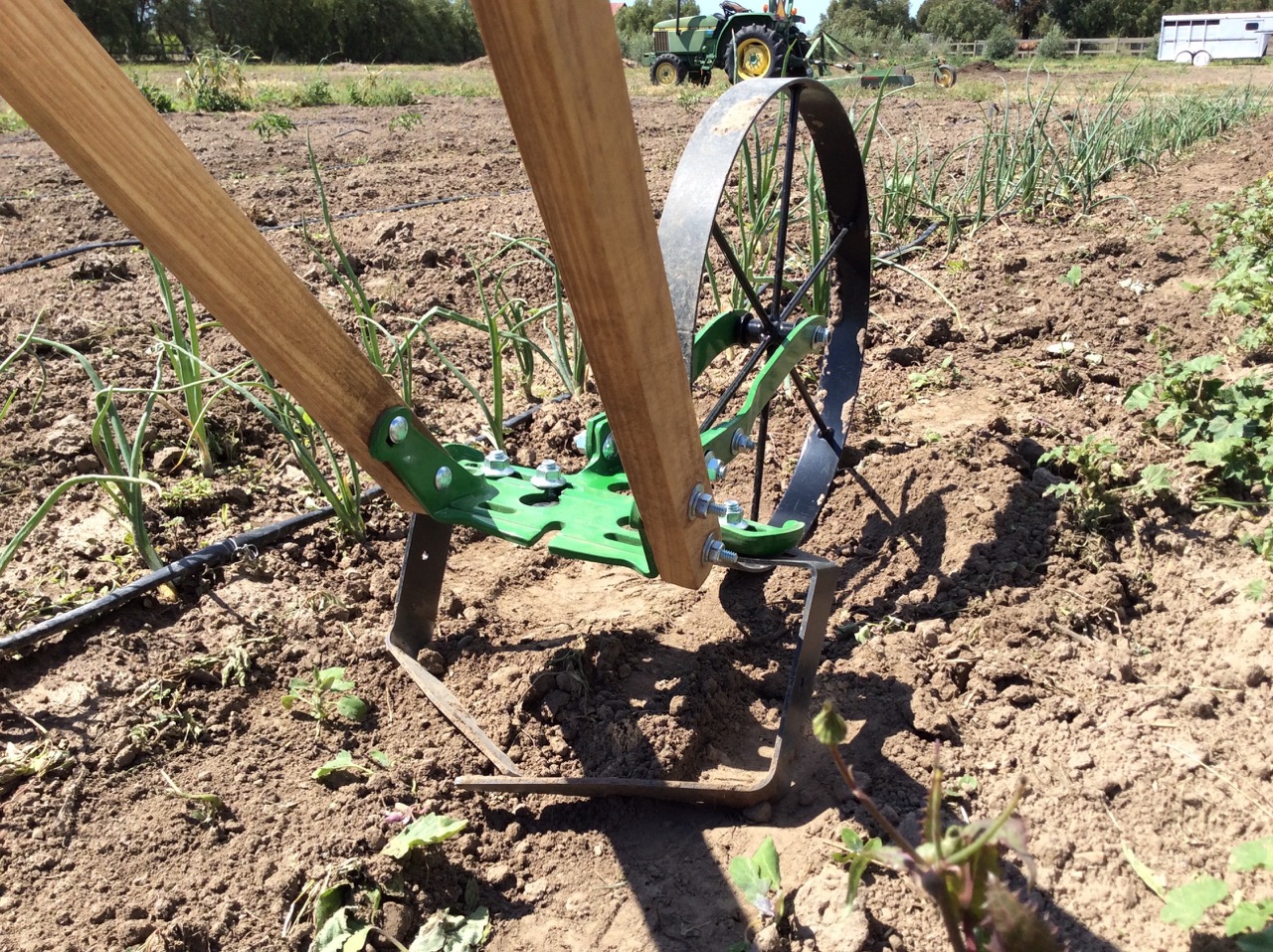The 1st Year of our Cafe Farm — Lessons learned and successes earned.
May 23, 2016
 On our ten-acre property, less than a mile from our Cafe, four acres are devoted to Sangiovese, Syrah, Nebbiolo, and Cabernet grapes from which we create wines under our private label, Bernat wines. An additional 4-acres of prime land have been cultivated by local organic farmers for themselves through the years, but their focus wasn’t solely on providing produce for our restaurant. When Shu and Debby Takikawa, the last farmers to farm this section of land, took over the 40 acres behind us, Shu encouraged us to farm it ourselves. We were eager to try, but knew well that running a farm along with our current endeavors– a vineyard, winery, wine merchant, and restaurant– we needed help.
On our ten-acre property, less than a mile from our Cafe, four acres are devoted to Sangiovese, Syrah, Nebbiolo, and Cabernet grapes from which we create wines under our private label, Bernat wines. An additional 4-acres of prime land have been cultivated by local organic farmers for themselves through the years, but their focus wasn’t solely on providing produce for our restaurant. When Shu and Debby Takikawa, the last farmers to farm this section of land, took over the 40 acres behind us, Shu encouraged us to farm it ourselves. We were eager to try, but knew well that running a farm along with our current endeavors– a vineyard, winery, wine merchant, and restaurant– we needed help.


We initially started by planting a large amount of different types of crops. Planting many different varieties of each plant, gives us an idea of which species not only grows best in each area, but which of those tastes the best. We pay close attention to each plant and learn which ones like which soils, climate preference, and which are affected by pests and how. All of the varieties of Kale we planted thrived through the winter; red lettuce, and romaine were also very successful.
Pests have been our biggest problem. Our first crop was planted when one of our dogs, Gypsy, was on vacation. The gophers and ground squirrels noticed and began moving into the farm. They ate almost all of the green beans we planted. Of 600 plants only 10 survived! They also ate the tops off of the carrot and beet plants. Although losing their tops did not initially kill them, since the plant was working hard to regrow the tops, the produce didn’t survive after all.
[wpvideo JHf2F06k]
The other challenge all farmers face, are weeds, we are no exception. Since our farm is CCOF certified organic, using herbicides is absolutely out of the question, not to mention it would deplete the nutrients in the soil and affect the quality of our produce. Being a small farm with only Sam and Matt to do the weeding, we quickly realized that we must be missing something– there was no way we could keep up. The weeds aggressively took over and whole rows had to be plowed back in to the soil before the plants had a chance to grow to maturity. Weeding through the research (yes, that was a pun) of all the various farm equipment to assist with this problem was overwhelming, even to a veteran vineyard farmer, like Sam. It was time to seek the advice of someone who had more experience in large scale farming than us. Sam met with a local veteran farmer, Steve Loyal, who shared valuable information. Steve directed us on the best equipment for a farm our size. We bought a hand hoe on a wheel that as we push, it slices under the soil cutting the roots of the weeds.  Our tractor also needs some additional equipment to mechanize weeding, which we can tell you more about by the next time we post a Cafe Farm Update. We now look forward to watching our seeds grow to their full potential before the weeds can take them over (hopefully).
Our tractor also needs some additional equipment to mechanize weeding, which we can tell you more about by the next time we post a Cafe Farm Update. We now look forward to watching our seeds grow to their full potential before the weeds can take them over (hopefully).
Though we are still in the midst of a big learning curve, we have had much greater success now that Gypsy is back on the job maintaining the ground squirrel population. Thanks to our hard working farm dog approximately 1500 heads of lettuce, 200 pounds of snap peas, and many, many buckets of onion, garlic, kale, swiss chard, arugula, spinach, turnips, and cilantro—came from our Cafe Farm since July 2015. We are getting a healthy head start for this summer with 900 plants of various heirloom tomato varieties in the ground, 10 types of lettuces, and squash and pumpkins ready for fall; we are excited to continue to expand the beauty and bounty on our menu at the Cafe.
 While we are talking about the farm, it’s worth mentioning that we have an annual benefit Farm Dinner event called In the Vineyard & On the Farm . If you’d like to experience our Cafe Farm and our Bernat Wines firsthand click here for information. It’s a beautiful event that sells out every year, so if you’re interested, don’t wait to reserve your seats!
While we are talking about the farm, it’s worth mentioning that we have an annual benefit Farm Dinner event called In the Vineyard & On the Farm . If you’d like to experience our Cafe Farm and our Bernat Wines firsthand click here for information. It’s a beautiful event that sells out every year, so if you’re interested, don’t wait to reserve your seats!
[contact-form to=”shawnda@losolivoscafe.com” subject=”Interested in learning more about the Cafe Farm and happenings at the Los Olivos Wine Merchant & Cafe?”][contact-field label=”Name” type=”name” required=”1″ /][contact-field label=”Email” type=”email” required=”1″ /][/contact-form]